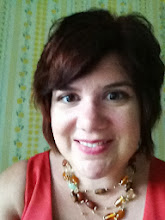Monaghan and Saul's article, The Reader, The Scribe, The Thinker: A Critical Look at the History of American Reading and Writing Instruction exemplifies the notion that the disciplines of reading and writing are not equally recognized, regarded, or perhaps, even taught by players in the field of literacy. A disparity has occurred throughout the history of education in which reading has been more valued than its writing counterpart, although reading is indeed a receptive skill while writing is defined as a productive skill. It was interesting to learn that writing has been viewed as more synonymous with the mechanics of the process, as well as penmenship instruction. "The pedagogical emphasis was perscriptive: 'good' writing was taken to mean a mastery of capitalization, punctuation and syntax as well as correct spelling and pleasing handwriting" (Monaghan & Saul, 1987, p. 87).
This quote resonates with me since I have instructed several students who initially equate writing with handwriting. Often responses on "Reading Interest Inventories", that I have administered in the beginning of the school year, focus on the product of writing rather than the process. I am also realizing that the title of my interest inventory needs to address writing, as well. Perhaps I am perpetuating the stereotype that reading is more important than writing.
It is somewhat ironic that educators tend to concentrate their efforts on the reading currciulum when one of the loudest complaints is often the inability to have choice in the reading program or materials mandated by the school district. The use of basal reading programs and scripted teacher materials began to be used in earnest across the nation as one response to A Nation at Risk. Published in 1983, this government document advocated more "teacher proof" materials in order for American students to raise test scores and compete with their global counterparts. Although progress has been made since that publication, it is hard to ignore the fact the inordinate amounts of money are spent each year on reading programs that have not resulted in all children reading at or above grade level.
Writing instruction, on the other hand, offers teachers and students more choice and control. Student choice is continually advocated in terms of motivating readers, of all ages. Are students being given choice in terms of writing assignments, as well? Or are contrived writing prompts leading to poorly written responses and a lack of motivation in this area? With less materials needed and more control afforded, why isn't writing on equal footing with reading?
I am currently in my sixth year of teaching an undergraduate "Teaching of Phoncis" course to preservice teachers. The beginning of the course always begins with a history of phonics research and terminology, since many students have not focused on this topic since their own childhood days. Although we define synthetic, analytic, and anologic phonics approaches, I want my students to be aware that one specific approach has not been truly advocated by research. Cunningham (2009) states that, "Children need systematic phonics instruction but there is no best systematic approach (p. 247). I found it enlightening to read that Flesch's Why Johnny Can't Read and What You Can Do About It (1955) opened the dialogue among teachers regarding students' phonics instruction and its place in the broader reading curriculum.
In the phonics course, I also try to stress the key component of writing in early literacy skills. "Writing is perhaps the best opportunity for developing young children's print concepts, concrete words, phonemic awareness, and knowledge of letters and sounds. Because they are writing what they want to tell, children become perfectly clear about what reading and writing are for" (Cunningham, 2009, p. 24). Future teachers need to see this connection.
As literacy instructors, we must all continue to advocate for effective reading and writing instruction, even if we have a particular passion for one over the other. Continuing to explore the verticality of writing instruction is empowering. "Without knowledge of the intellectual history of curriculum studies, without understanding of its past and present circumstances (both internal and external to the field), one cannot contribute to the field. One cannot advance its conversation and thereby complicate our understanding. Nor without such knowledge can one claim expertise" (Pinar, 2007, xv).
Thursday, February 4, 2010
Subscribe to:
Post Comments (Atom)


I appreciate your comments about the Phonics class, Rochelle, having had to teach that for several years to future Middle Childhood teachers! I also tried to bring writing instruction into it.
ReplyDeleteRochelle,
ReplyDeleteI just tried to post a moment ago and have confirmed my earlier suspicion that if you hit enter twice on Blogger, you move away from the page, losing what you've typed. Humph.
I really appreciated reading your erudite analysis of this article. I thought your take as a teacher of a phonics course was very insightful. I just skimmed the abbreviated version of the National Reading Panel report and could see how it could be interpreted as promoting a more synthetic approach to phonics.
I, too, noted the Cunningham (2009) observation that young children who write have an easier time "joining the literacy club." It makes sense that this would appeal to the egocentric nature of young children. Children see themselves first as meaning makers, and then they can develop a curiosity about deciphering what other writers have encoded.
Finally, I loved your use of the term "verticality of writing instruction."